70以上 inappropriate sinus tachycardia treatment guidelines 324048-How to treat inappropriate sinus tachycardia
Mar 16, 21 · Little literature exists regarding the syndrome of inappropriate sinus tachycardia during pregnancy We aimed to further understand the natural history of inappropriate sinus tachycardia in pregnancy, and to explore maternal and fetal outcomesNov 16, 19 · Type of Tachycardia Treatment (Grade) Not Mentioned in 19 Guidelines Narrow QRS tachycardias Verapamil and diltiazem;Sinus tachycardia is a rhythm in which the rate of impulses arising from the sinoatrial (SA) node is elevated Sinus tachycardia is most often a normal and physiologic response, for example during exercise However, sinus tachycardia can in some instances be inappropriate or pathologic

Sinus Tachycardia Normal Vs Inappropriate Causes Treatment
How to treat inappropriate sinus tachycardia
How to treat inappropriate sinus tachycardia-INTRODUCTION Inappropriate sinus tachycardind as an average HR ≥ 90 bpm during 24hour Holter monitoring 1 The most common symptoms are palpitation, dizziness, chest discomfort, orthostatic intolerance, and fatigue 1–4 Sometimes, the symptoms can be severe andThe additional limitations of radiofrequency energy for sinus node modification include a risk of permanent sinus node damage, necessitating pacemaker implantation;




Table 3 From Inappropriate Sinus Tachycardia Semantic Scholar
Apr 05, 16 · Adenosine is suggested in the "10 AHA Guidelines for Cardiopulmonary Resuscitation and Emergency Cardiovascular Care–Part 8 Adult Advanced Cardiovascular Life Support" (10 Adult ACLS guideline) 75 if a widecomplex tachycardia is monomorphic, regular, and hemodynamically tolerated, because adenosine may help convert the rhythm to sinus and may help in the diagnosis When doubt exists, it is safest to assume any widecomplex tachycardiaIt is not unlikely that individuals with inappropriate sinus tachycardia will be at greater risk of cardiovascular disease but the evidence is yet lacking Treatment of inappropriate sinus tachycardia Inappropriate sinus tachycardia is treated with oral betablockers (bisoprolol 510 mg once daily), calcium channel blockers or ivabradineRecurrence of symptoms of inappropriate sinus tachycardia;
Inappropriate sinus tachycardia – The syndrome of inappropriate sinus tachycardia is defined by a fast sinus rhythm greater than 100 beats/minute Narrow QRS complex tachycardias Clinical manifestations, diagnosis, and evaluation View in ChineseInfrequent finding abnormal P wave before or after a QRS complexMar 30, 12 · tachycardia requires treatment of the underlying cause 23 Inappropriate Sinus Tachycardia (IST) Is a syndrome that can occur due to increased au
While most patients receiving sinus node modification ablation for Inappropriate sinus tachycardia perceive an acute symptomatic improvement, almost twothirds of patients have no longterm improvement, and resolution of symptoms is quite rareNov 30, 14 · In patients with inappropriate sinus tachycardia the increased heart rate is generally a more permanent problem Most patients with inappropriate sinus tachycardia are young females The good news is that the prognosis isNov 01, 1997 · Initial treatment of inappropriate sinus tachycardia is medical therapy The primary drug of choice is high doses of βadrenergic blocking drugs βAdrenergic blocking drugs are particularly effective in treating inappropriate sinus tachycardia resulting from radiofrequency catheter ablation of supraventricular tachycardias, such as slow atrioventricular nodal pathway




Inappropriate Sinus Tachycardia In Pregnancy A Benign Phenomena Bmj Case Reports




Pin On True Story
Amiodarone (IIb) Sotalol, lidocaine Inappropriate sinus tachycardia Betablockers (IIa)Here, we propose both potential mechanistic pathways as well as an initial treatment algorithm for sinus node dysfunction based upon the existing evidence KEYWORDS Inappropriate sinus tachycardia, postural orthostatic tachycardic syndrome, sinus node dysfunction The authors report no conflicts of interest for the published contentA thorough evaluation of secondary causes of tachycardia is required in the workup of all cases and if found, must be treated before a diagnosis of IST can be made Finally, effective treatments vary but can include ivabradine, betablockers, or calcium channel antagonists;




Inappropriate Sinus Tachycardia Symptom And Heart Rate Reduction With Ivabradine A Pooled Analysis Of Prospective Studies Heart Rhythm




Inappropriate Sinus Tachycardia Mistaken For Relapse Of Reentrant Supraventricular Tachycardia In A Young Woman Treated Successfully With Ivabradine
May 24, 21 · Misdiagnosis and inappropriate treatment (ie, calcium channel blockers) may have catastrophic consequences When a patient with a widecomplex tachycardia is being evaluated and the diagnosis is not certain, the arrhythmia must be initially regarded as ventricular tachycardia until it is proven to be otherwise Epidemiology15 Heart Rhythm Society Expert Consensus Statement on the Diagnosis and Treatment of Postural Tachycardia Syndrome, Inappropriate Sinus Tachycardia, and Vasovagal Syncope May 13, 15—This document has three objectives 1) to establish working criteria for the diagnosis of postural tachycardia syndrome (POTS), inappropriate sinus tachycardia (IST), and vasovagalCastellanos A, Moleiro F, Chakko S, et al Heart rate variability in inappropriate sinus tachycardia Am J Cardiol 1998; 7 Krahn AD, yee R, Klein GJ, Morillo C Inappropriate sinus tachycardia evaluation and treatment J Cardiovasc Electrophysiol 1995;



3




Inappropriate Sinus Tachycardia In Pregnancy A Benign Phenomena Abstract Europe Pmc
Oct 01, 19 · Type of Tachycardia Treatment (Grade) Not Mentioned in 19 Guidelines;19 Guidelines on Supraventricular Tachycardia (for the management of patients with) ESC Clinical Practice Guidelines Topic(s) Arrhythmias, General Atrial Fibrillation Supraventricular Tachycardia (nonAF) Guidelines version available to download Full text Published in 19Betablockers (now all are grade IIa) Amiodarone, digoxin Wide QRS tachycardias Procainamide, adenosine (both grade IIa);
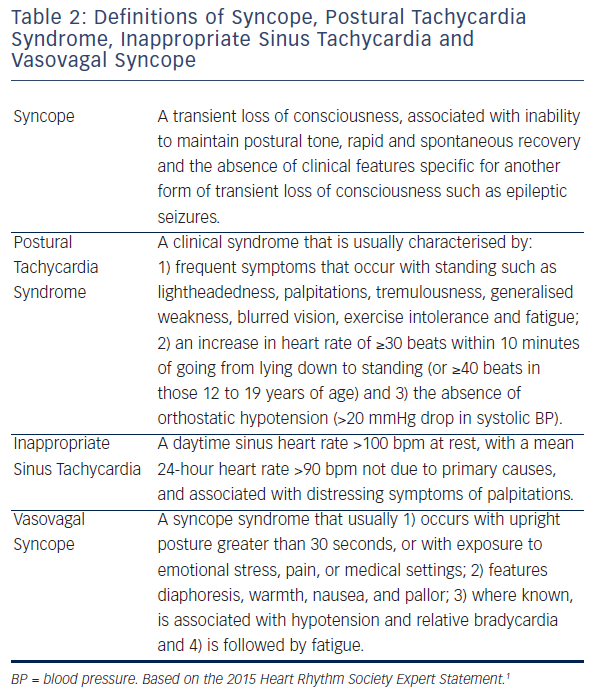



Management Of Postural Tachycardia Syndrome Inappropriate Sinus Tachycardia And Vasovagal Syncope Aer Journal




Canadian Cardiovascular Society Position Statement On Postural Orthostatic Tachycardia Syndrome Pots And Related Disorders Of Chronic Orthostatic Intolerance Canadian Journal Of Cardiology
Mar 16, 11 · Background The long‐term efficacy of pyridostigmine, a reversible acetyl cholinesterase inhibitor, in the treatment of postural orthostatic tachycardia syndrome (POTS) patients remains unclear We report our retrospective, single‐center, long‐term experience regarding the efficacy and adverse effect profile of pyridostigmine in the treatment of POTSFeb 26, 13 · Inappropriate sinus tachycardia (IST), a syndrome characterized by unexpectedly fast sinus rates at rest, with minimal physical activity, or both, is manifest by a spectrum of symptoms including palpitations, weakness, fatigue, dizziness, or near syncope Acceleration in rate with minimal exercise is excessive and heart rate recovery is prolongedMinimal activity accelerates the rate rapidly and substantially
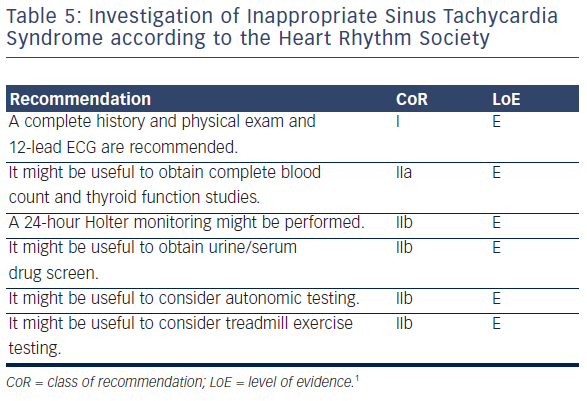



Management Of Postural Tachycardia Syndrome Inappropriate Sinus Tachycardia And Vasovagal Syncope Aer Journal




14 Inappropriate Sinus Tachycardia Ideas Inappropriate Sinus Tachycardia Sinus Tachycardia Sinusitis
Betablockers (now all are grade IIa) Amiodarone, digoxin Wide QRS tachycardias Procainamide, adenosine (both grade IIa);Abstract Background Inappropriate Sinus Tachycardia (IST) is a clinical syndrome characterized by a sinus heart rate inexplicably higher than one hundred beats per minute at rest that is associated with symptoms like palpitations, dyspnea or dizziness in the absence of primary causes of tachycardia The diagnosis requires exclusion of other causes of tachycardia includingSep 25, 17 · Ivabradine's most frequent application in electrophysiology is for the treatment of inappropriate sinus tachycardia It should be noted that its use for inappropriate sinus tachycardia is not an European Medicines Agency/Food and Drug Administration–approved indication for ivabradine




Inappropriate Sinus Tachycardia Or Something Else Muresan 19 Journal Of Arrhythmia Wiley Online Library
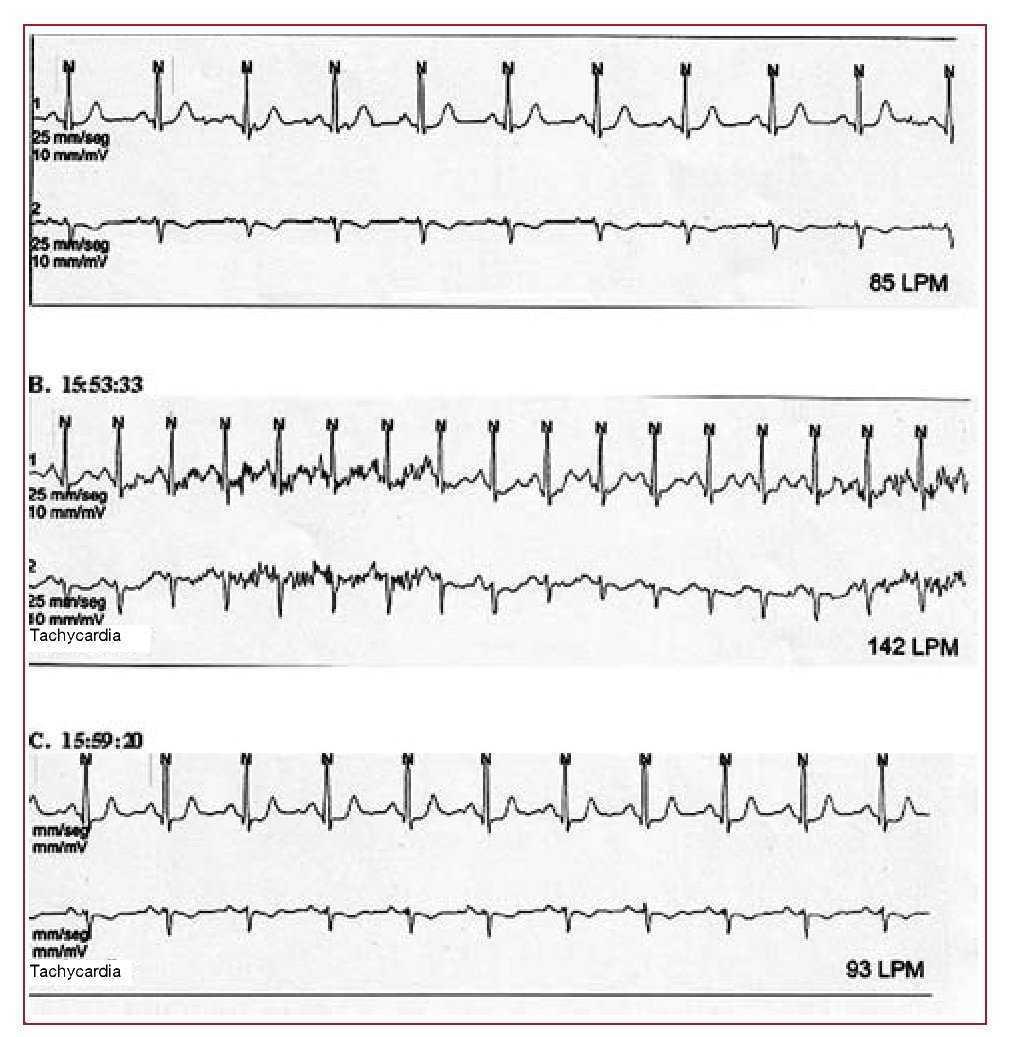



Ivabradine As A Treatment Option For Inappropriate Sinus Tachycardia Revista Espanola De Cardiologia
Jun 01, · Ablation lesions were delivered in a craniocaudal direction, targeting the earliest endocardial sinus activation until the baseline sinus rate decreased to approximately 60–70 bpm, with an increasePhysiologic sinus tachycardia Appropriate increased sinus rate in response to exercise and other situations that increase sympathetic tone Inappropriate sinus tachycardia (IST) Sinus heart rate >100 bpm at rest, with a mean 24h heart rate >90 bpm not due to appropriate physiological responses or primary causes such as hyperthyroidism orNarrow QRS tachycardias Verapamil and diltiazem;
:max_bytes(150000):strip_icc()/automatic-tachycardias-1746237_Final-88d78e460a4b4bb0847373fb9821c66e.jpg)



Automatic Tachycardias Overview And More




Ablation Of Inappropriate Sinus Tachycardia A Systematic Review Of The Literature Sciencedirect
Mar 08, 17 · The syndrome of inappropriate sinus tachycardia (IST) is a welldescribed and generally benign condition outside pregnancy There is, however, little information in the literature about IST during pregnancy and nothing about the likely mechanism in such cases Equally there is a paucity of information about the effects on maternal and fetal wellbeing in patients whoJun 09, 21 · Inappropriate sinus tachycardia Therapy is primarily recommended for symptomatic control Ivabradine is recommended in affected patients Beta blockers may be considered for secondline therapyA variety of treatments are available to treat IST Your healthcare provider might suggest that you Eliminate potential triggers or stimulants in your diet such as caffeine, nicotine, and alcohol;
:max_bytes(150000):strip_icc()/inappropriate-sinus-tachycardia-1745220-v1-549ea837eb4f4c7d94feef0f732fe8bd.gif)



Inappropriate Sinus Tachycardia Causes And Treatment




Late Outcomes Of Surgical Ablation For Inappropriate Sinus Tachycardia The Annals Of Thoracic Surgery
Nov 01, 15 · Supraventricular tachycardia refers to rapid rhythms that originate and are sustained in atrial or atrioventricular node tissue aboveBrugada syndrome tachycardia tachycardia, atrioventricular nodal reentry tachycardia, ventricular discontinuation of the offending medication and following treatment guidelines for the specific arrhythmia In overdose situations, targeted Bradyarrhythmias are broadly classified as sinus node dysfunction and atrioventricular block DrugsAnd sinus tachycardia 31–33 To overcome these barriers, performing epicardial rather than endocardial radiofrequency ablation might provide a solution Such can allow the delivery of energy to the epicardial aspect of the sinus
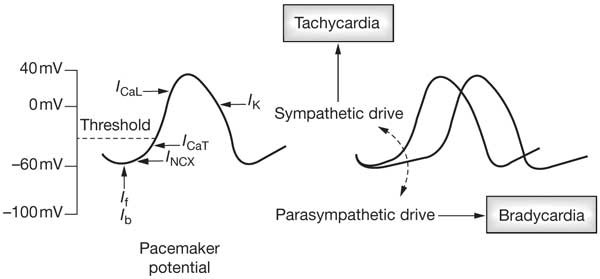



The Sinus Tachycardias Nature Reviews Cardiology




Atrial Fibrillation And Flutter Practical Management Tips Internal
Amiodarone (IIb) Sotalol, lidocaine Inappropriate sinus tachycardia Betablockers (IIa)Jun 02, 21 · Inappropriate sinus tachycardia is a source of anxiety for many people, particularly since it is difficult to treat and may not be possible to prevent 10 While ivabradine is known to be effective in reducing the risk of heart failure and angina, it is not approved as a treatment for ISTTreatment is not always needed for inappropriate sinus tachycardia (IST), particularly if the episodes are fairly infrequent and not interfering with day to day life If symptoms are more problematic, medicines such as beta blockers or calcium channel blockers may be suggested




Management Of Postural Tachycardia Syndrome Inappropriate Sinus Tachycardia And Vasovagal Syncope Aer Journal
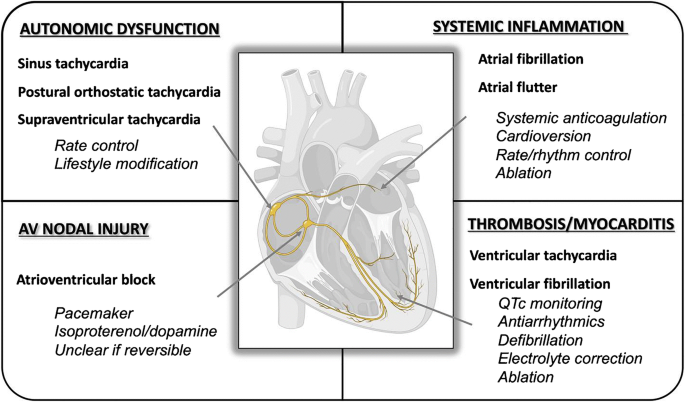



Management Of Arrhythmias Associated With Covid 19 Springerlink
Treatment Your doctor may suggest a "wait and see" approach if your symptoms aren't causing major problems Try to avoid triggers like nicotine, alcohol, or caffeineCanadian Cardiovascular Society Position Statement on Postural Orthostatic Tachycardia Syndrome (POTS) and Related Disorders of Chronic Orthostatic Intolerance, Heart Rhythm Society Expert Consensus Statement on the Diagnosis and Treatment of Postural Tachycardia Syndrome, Inappropriate Sinus Tachycardia, and Vasovagal Syncope, 15Although small amounts of exercise, emotional or physical stress are triggering factors



1




Ivabradine As A Treatment Option For Inappropriate Sinus Tachycardia Revista Espanola De Cardiologia
Inappropriate sinus tachycardia (IST) is a syndrome in which the sinus heart rate is inexplicably faster than expected and associated symptoms are present The heart rate at rest, even in a supine position, can exceed 100 beats/min;Feb 11, · Sotalol and lidocaine have been removed from the acute management of wide complex tachycardia algorithm Verapamil/diltiazem and catheter ablation are no longer recommended for inappropriate sinus tachycardia Ivabradine alone, betablocker alone, or both agents taken together should now be considered in symptomatic patients (Class IIa)Apr 15, 03 · The treatment of choice for symptomatic bradyarrhythmias in patients with sick sinus syndrome is the placement of a pacemaker 1, 3 Artificial pacemakers are well tolerated in elderly patients 2




Table 3 From Inappropriate Sinus Tachycardia Semantic Scholar
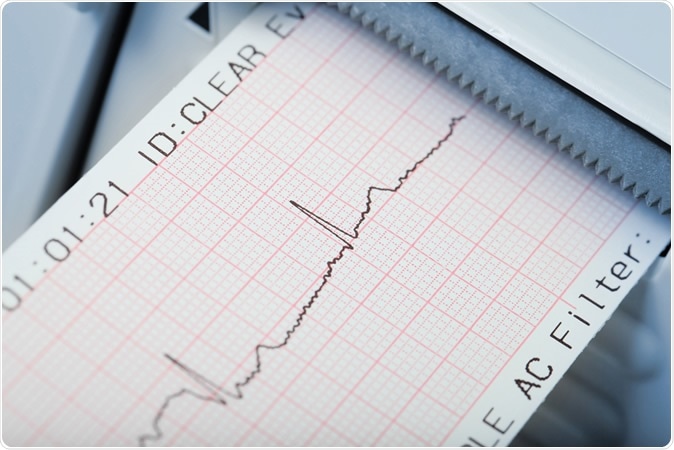



New Guidelines For Management Of A Fast Heartbeat Released
How is inappropriate sinus tachycardia treated?Jun 19, 18 · Abstract Inappropriate sinus tachycardia (IST) is a clinical syndrome, oftentimes debilitating, defined by fast sinus rates (>100 bpm at rest or >90 bpm on average over 24 h and not due to underlying causes) associated with symptoms that may include palpitations, as described in some guidelines and consensus documentsBackground Inappropriate Sinus Tachycardia (IST) is a clinical syndrome characterized by a sinus heart rate inexplicably higher than one hundred beats per minute at rest that is associated with symptoms like palpitations, dyspnea or dizziness in the absence of primary causes of tachycardia The diagnosis requires exclusion of other causes of tachycardia including




Supraventricular Tachycardia Symptoms And Causes Mayo Clinic




Outpatient Approach To Palpitations American Family Physician
Inappropriate Sinus Tachycardia (IST) is a condition in which an individual's resting heart rate is abnormally high – greater than 100 beats per minute or rapidly accelerating to over 100 beats per minute without an identifi able cause for the tachycardia, although small amounts of exercise, emotional or physical stress areInappropriate Sinus Tachycardia (IST) is a form of dysautonomia causing an abnormally high resting heart rate for no obvious reason It is estimated to affect about 1 in 100 people – usually young women Heart rhythm tracings in IST look normal, but are faster than usual This fast heart rhythm is called sinus tachycardiaTitleChallenges in Treatment of Inappropriate Sinus Tachycardia VOLUME 14 ISSUE 1 Author(s)Mohammed Ruzieh*, Abdelmoniem Moustafa, Ebrahim Sabbagh, Mohammad M Karim and Saima Karim AffiliationPenn State Heart and Vascular Institute, 500 University Drive, Hershey, PA , Department of Internal Medicine, University of Toledo Medical Center, 3000 Arlington




Acc Aha Supraventricular Tachycardia Svt Guidelines




New Esc Guidelines On Svts Underline Pivotal Role Of Catheter Ablation
Nov 23, 19 · Sinus tachycardia refers to an increased heart rate that exceeds 100 beats per minute (bpm) The sinus node, or sinoatrial node, is a bundle ofTake medicine to slow the heart rate such as ivabradine, betablockers, or calcium channel blockersAtrioventricular nodal reentrant tachycardia P wave rarely detectable;




Sinus Tachycardia Normal Vs Inappropriate Causes Treatment
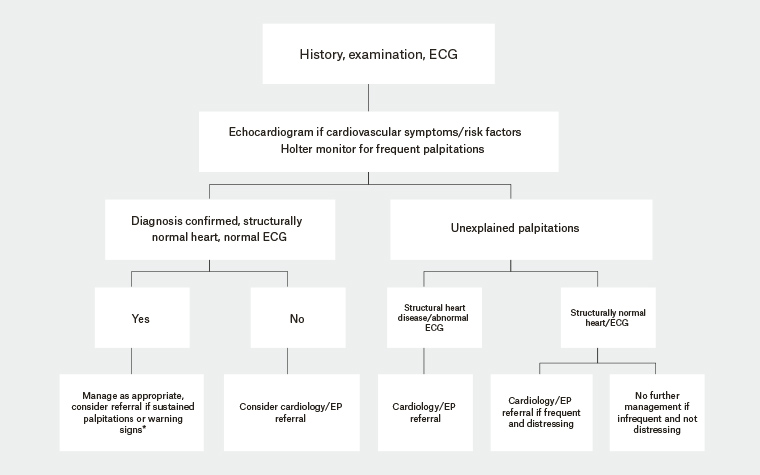



Racgp Approach To Palpitations
Inappropriate Sinus Tachycardia (IST) is a condition in which an individual's resting heart rate is abnormally high – greater than 100 beats per minute or rapidly accelerating to over 100 beats per minute without an identifiable cause;Feb 09, 21 · Physiological sinus tachycardia No specific treatment required Inappropriate sinus tachycardia (IST) cardiology consult to rule out other conditions that closely mimic IST and treat accordingly;Feb 01, · For the Supplementary Data which include background information and detailed discussion of the data that have provided the basis for the Guidelines see https//




Management Of Tachycardia Amboss



Www Mdpi Com 39 72 11 2 32 Pdf




15 Acc Aha Hrs Guideline For The Management Of Adult Patients With Supraventricular Tachycardia Circulation
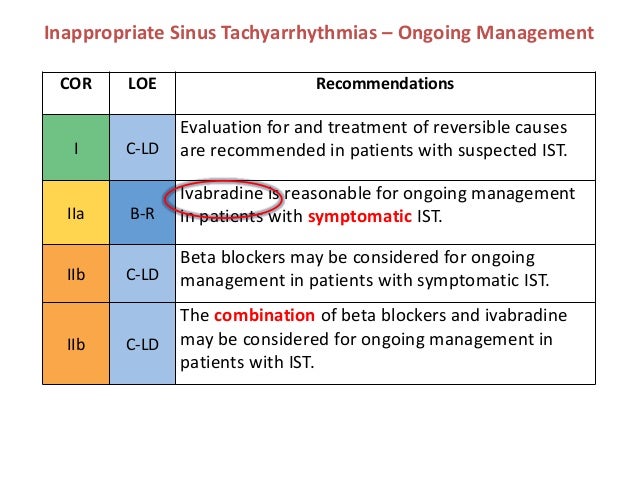



15 Svt Guideline Final 19 10 15



Q Tbn And9gcrzifzfnkst7rn9mxe8bxo54thiastaua0y0tdudwkww8e43fva Usqp Cau
33147-4.fp.png)



8udgdzwlt93snm




Figure 4 From Inappropriate Sinus Tachycardia Semantic Scholar



Inappropriate Sinus Tachycardia Information And Support Welcome
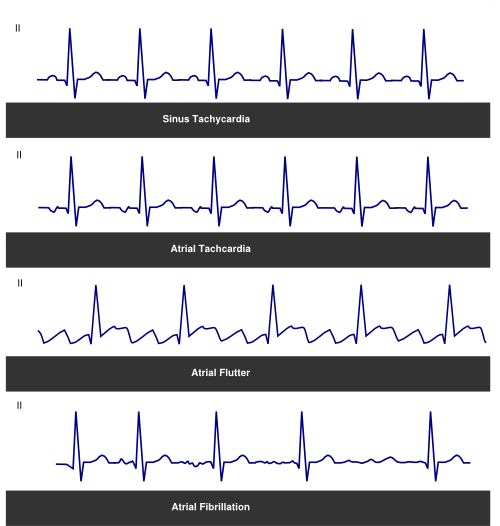



Tachycardia Textbook Of Cardiology



Academic Oup Com Europace Article Pdf 21 2 194 Euy128 Pdf




Atrial Tachycardia Diagnosis And Treatment The Cardiology Advisor




The Use Of Ivabradine In A Patient With Inappropriate Sinus Tachycardia And Cardiomyopathy Due To Limb Girdle Muscular Dystrophy Type 2i Bmj Case Reports




1316 184 Clonidine For Treatment Of Inappropriate Sinus Tachycardia Acc 19 Eposter




Petition Pharmac Make Ivabradine Accessible To Those With The Rare Cardiac Condition Ist Change Org




Pdf Ivabradine In Treatment Of Sinus Tachycardia Mediated Vasovagal Syncope



Cape Town Af Centrenew Esc Guidelines On Svt Management Catheter Ablation Is Key Cape Town Af Centre




Diagnosis And Management Of Common Types Of Supraventricular Tachycardia American Family Physician



Managing The Patient With Episodic Sinus Tachycardia And Orthostatic Intolerance Narichania Cardiology Journal




Inappropriate Sinus Tachycardia Elevated Heart Rate Caring Medical Florida




Management Of Tachycardia Amboss




Supraventricular Arrhythmias Clinical Framework And Common Scenarios For The Internist Mayo Clinic Proceedings




15 Acc Aha Hrs Guideline For The Management Of Adult Patients With Supraventricular Tachycardia Circulation




Challenges In Treatment Of Inappropriate Sinus Tachycardia Bentham Science




Table 2 From Guidelines For The Management Of Patients With Supraventricular Arrhythmias Executive Summary Semantic Scholar



Www Heartrhythmjournal Com Article S1547 5271 15 011 3 Pdf
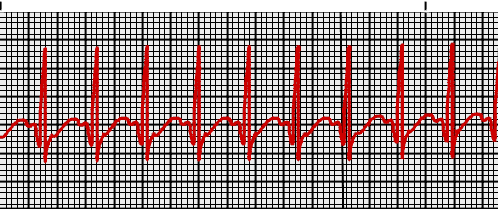



Supraventricular Tachycardia Vs Sinus Tachycardia Epomedicine



Emdocs Net Emergency Medicine Educationtreatment Of Refractory Svt Pearls And Pitfalls Emdocs Net Emergency Medicine Education




Sinus Tachycardia Normal Vs Inappropriate Causes Treatment




Inappropriate Sinus Tachycardia Does The 100 Beats Per Min Cut Off Matter Future Cardiology




Canadian Cardiovascular Society Position Statement On Postural Orthostatic Tachycardia Syndrome Pots And Related Disorders Of Chronic Orthostatic Intolerance Canadian Journal Of Cardiology




15 Acc Aha Hrs Guideline For The Management Of Adult Patients With Supraventricular Tachycardia Circulation
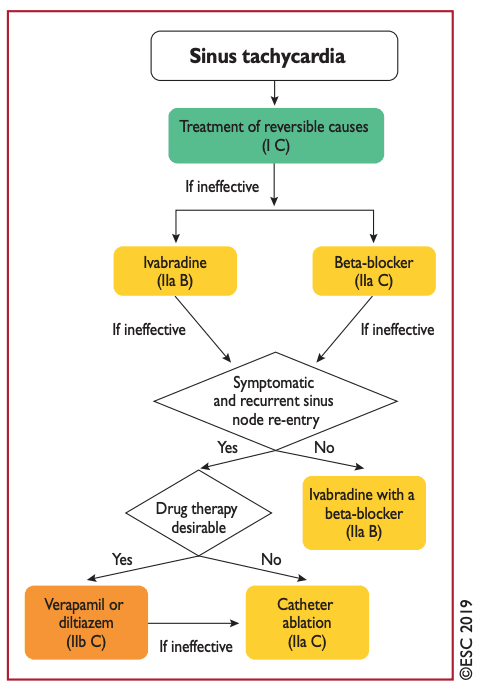



Sinus Tachycardia Cardio Guide




Executive Summary European Heart Rhythm Association Consensus Document On The Management Of Supraventricular Arrhythmias Aer Journal




The Diagnosis And Management Of Cardiac Dysrhythmias Atrial




Late Outcomes Of Surgical Ablation For Inappropriate Sinus Tachycardia The Annals Of Thoracic Surgery




Differential Diagnosis Of Supraventricular Tachycardias Oxford Medicine




Supraventricular Tachycardia Non Cardiac Surgery Cancer Therapy Advisor
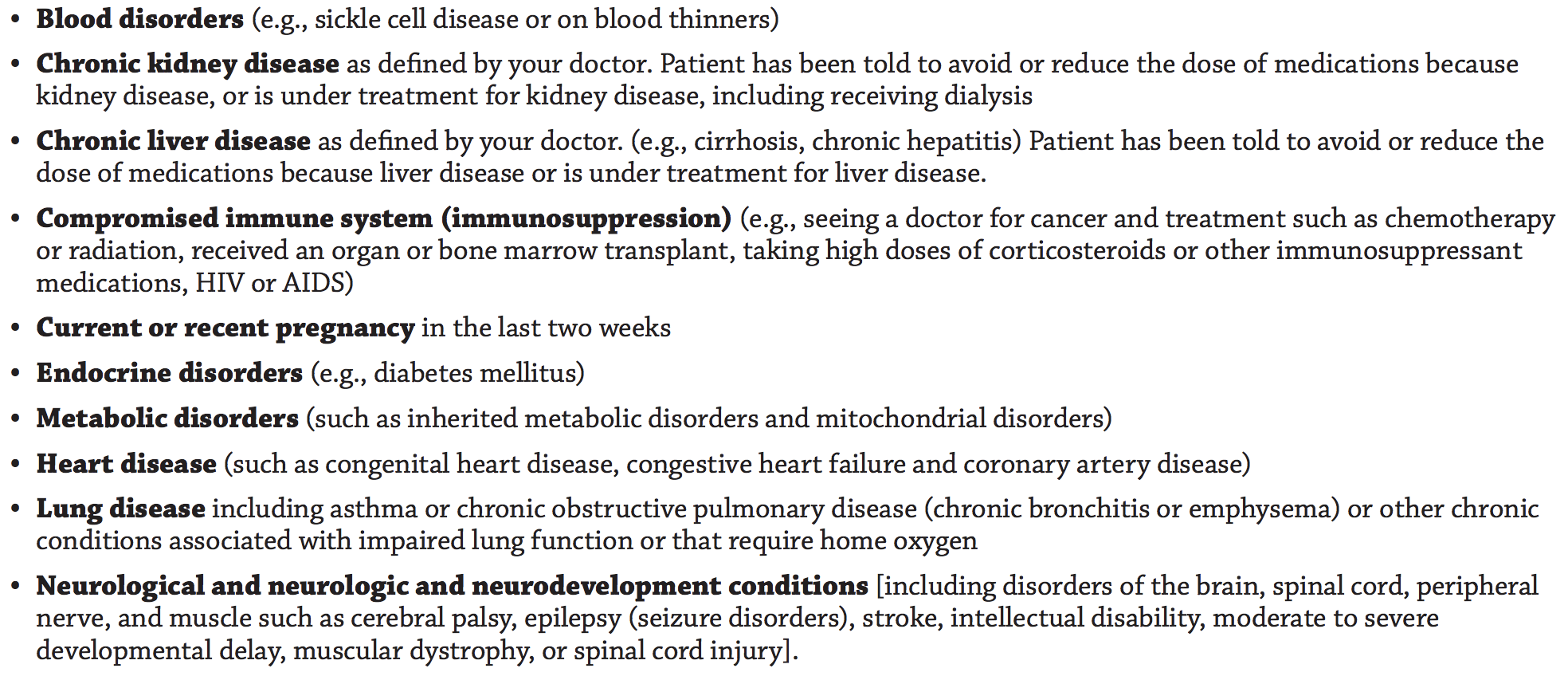



Dysautonomia International Coronavirus Dysautonomia




Acute Therapy Of Narrow Qrs Tachycardia In The Absence Of An Download Scientific Diagram



An Approach To The Patient With A Suspected Tachycardia In The Emergency Department



Managing The Patient With Episodic Sinus Tachycardia And Orthostatic Intolerance Narichania Cardiology Journal




Inappropriate Sinus Tachycardia Elevated Heart Rate Caring Medical Florida
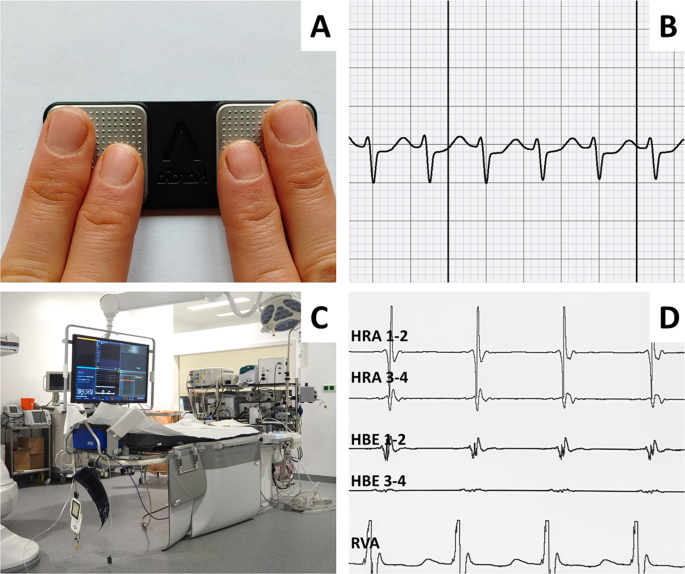



Prospective Blinded Evaluation Of Smartphone Based Ecg For Differentiation Of Supraventricular Tachycardia From Inappropriate Sinus Tachycardia Springerlink
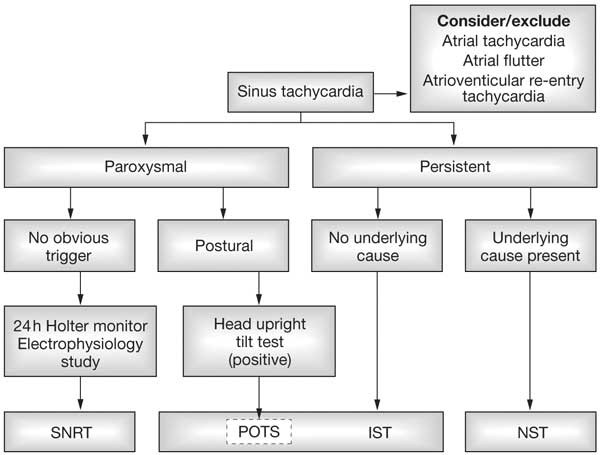



The Sinus Tachycardias Nature Reviews Cardiology



Www Escardio Org Static File Escardio Guidelines Publications Svaguidelines Sva Ft Pdf




Stars Inappropriate Sinus Tachycardia Ist Indd
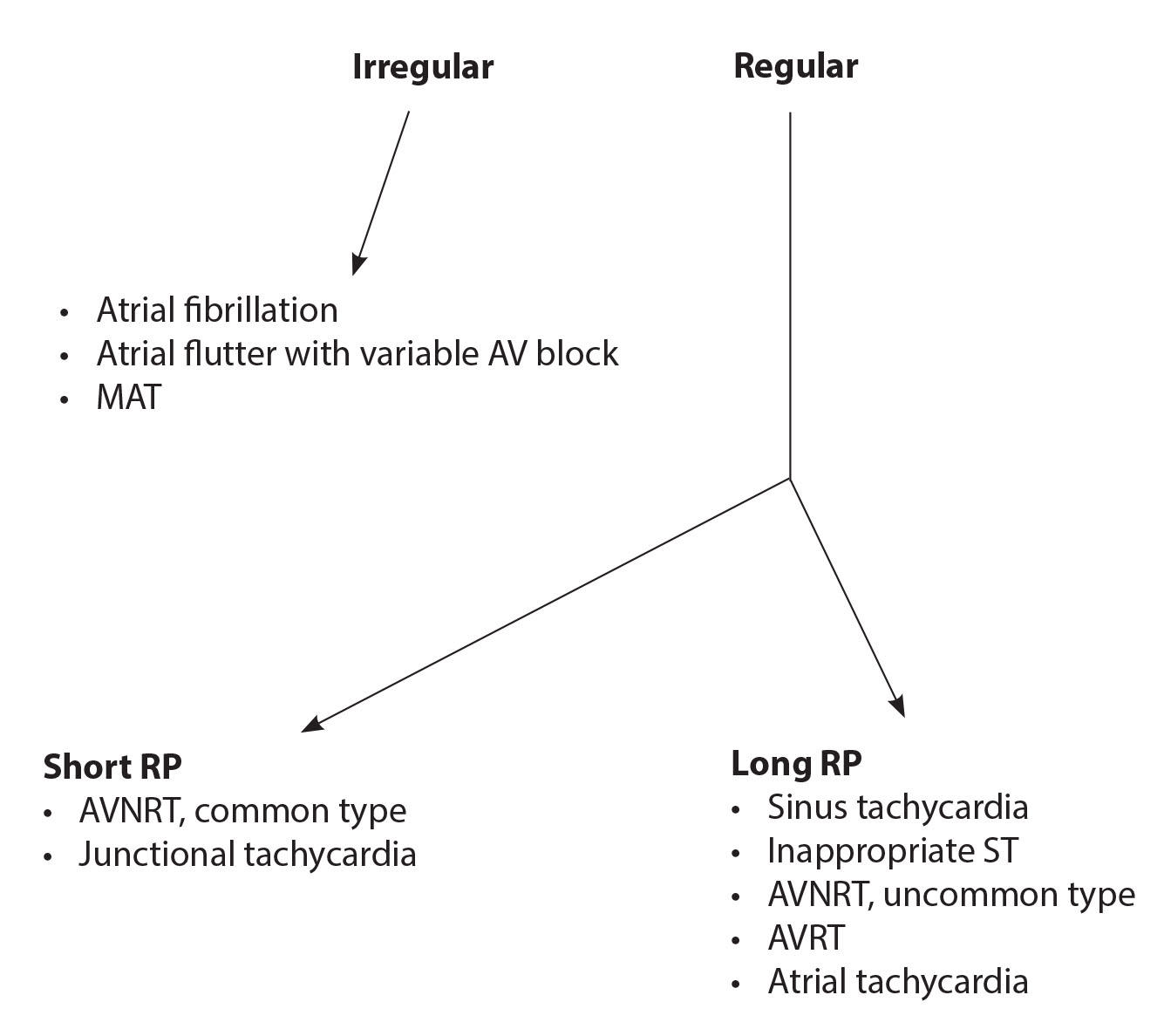



Diagnosis And Management Of Supraventricular Tachycardia 10 16 Relias Media Continuing Medical Education Publishing



Http Www Heartrhythmalliance Org Files Files For Patients Vh Final Inappropriate sinus tachcardia Pdf




Diagnostic Criteria For Inappropriate Sinus Tachycardia Download Table



Ses Library Usyd Edu Au Bitstream 2123 2 Accepted Abed Sinus Tachycardia Imj 10apr16 Pdf
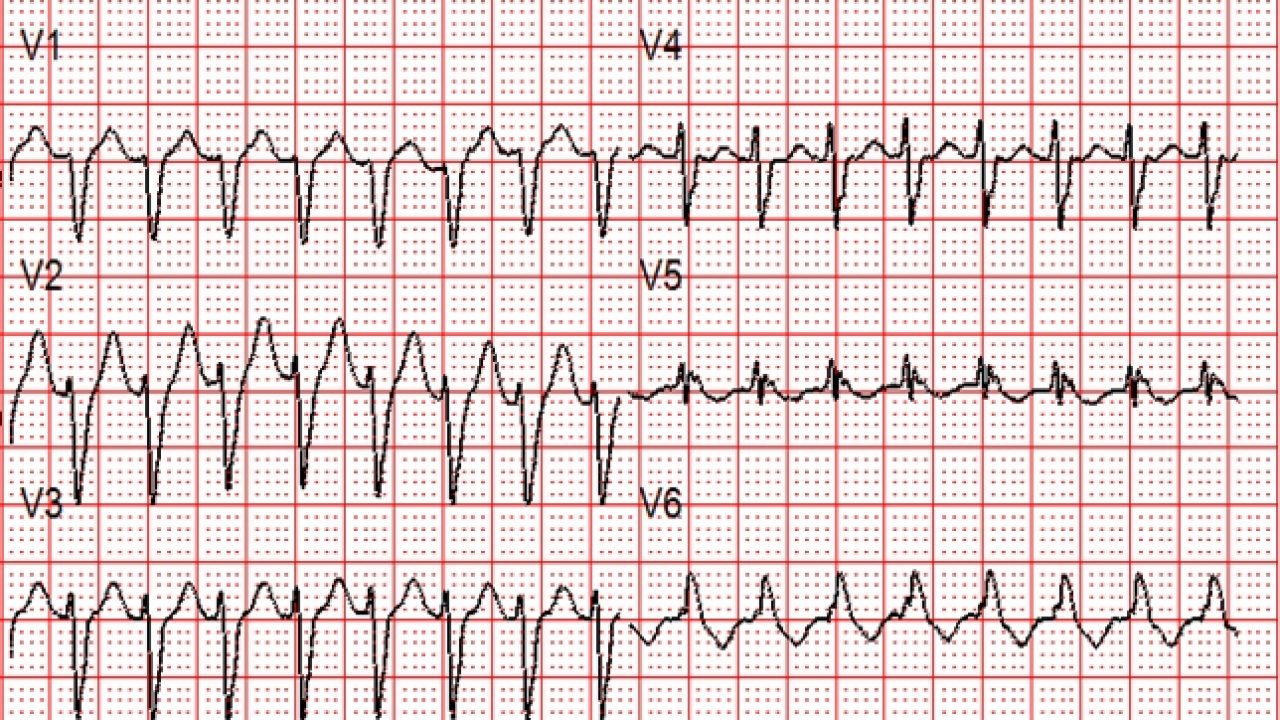



Svt With Aberrancy Or Ventricular Tachycardia Acls Medical Training




Inappropriate Sinus Tachycardia Does The 100 Beats Per Min Cut Off Matter Future Cardiology
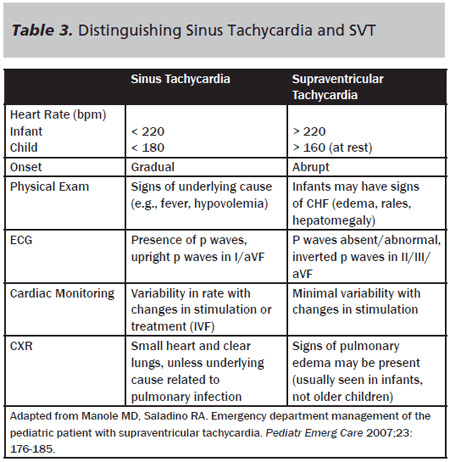



Supraventricular Tachycardia Vs Sinus Tachycardia Epomedicine



The Trouble With Sinus Tachycardia Ems 12 Lead




Tachycardia Cancer Therapy Advisor
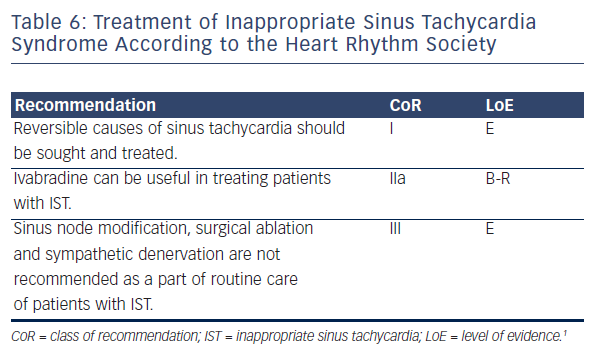



Management Of Postural Tachycardia Syndrome Inappropriate Sinus Tachycardia And Vasovagal Syncope Aer Journal
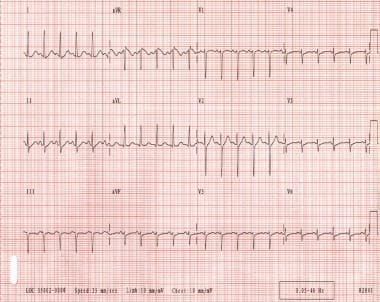



Paroxysmal Supraventricular Tachycardia Background Etiology Epidemiology



Www Heartrhythmjournal Com Article S1547 5271 15 011 3 Pdf



1




The Diagnosis And Management Of Cardiac Dysrhythmias Atrial Tachycardia Pharmacologic Treatment 8 19 Ppt Download




Inappropriate Sinus Tachycardia Myheart Net



The Trouble With Sinus Tachycardia Ems 12 Lead



Static Cigna Com Assets Chcp Pdf Coveragepolicies Pharmacy P 0010 Coveragepositioncriteria Ivabradine Pdf




Supraventricular Tachyarrhythmias And Their Management In The Perioperative Period Continuing Education In Anaesthesia Critical Care And Pain




Tachycardia And Its Acls Algorithm Acls Algorithms Com




Inappropriate Sinus Tachycardia Ep Lab Digest Hmp Global




Cardiology Pearls Posts Facebook




Inappropriate Sinus Tachycardia Mistaken For Relapse Of Reentrant Supraventricular Tachycardia In A Young Woman Treated Successfully With Ivabradine
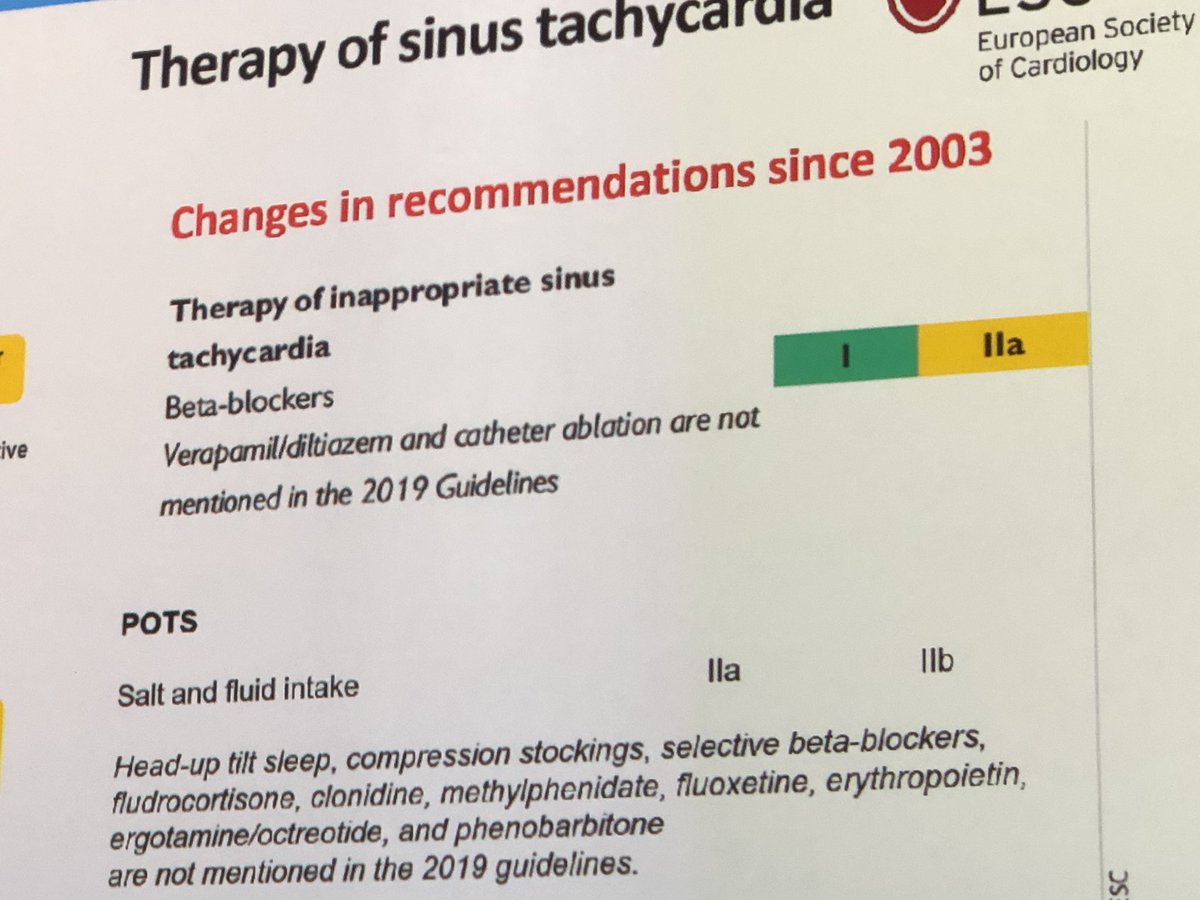



Hany Ragy New Recommendations For Sinus Tachycardia Esccongress Note All The Treatments Which Are Mentioned To Be Not Mentioned Very Voldemort T Co 9nzkgu3dj8




Baseline Intrinsic Heart Rate And Response To Ivabradine Treatment In Patients With Inappropriate Sinus Tachycardia Kaczmarek Annals Of Noninvasive Electrocardiology Wiley Online Library




Inappropriate Sinus Tachycardia Journal Of The American College Of Cardiology




Inappropriate Sinus Tachycardia Mistaken For Relapse Of Reentrant Supraventricular Tachycardia In A Young Woman Treated Successfully With Ivabradine
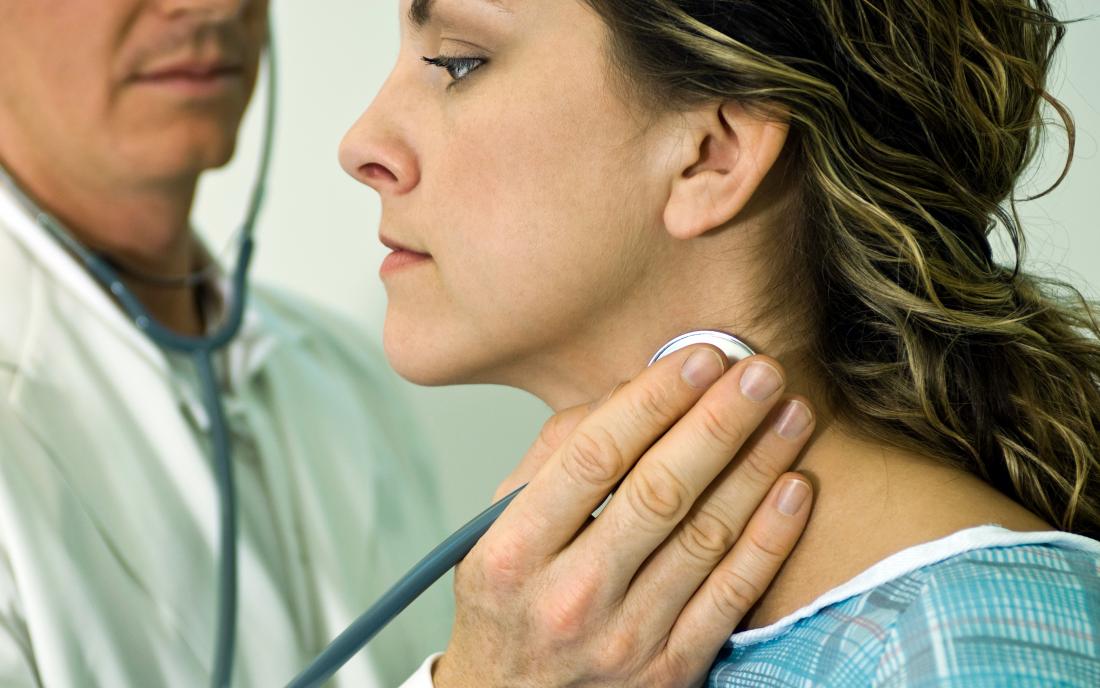



Sinus Tachycardia Symptoms Types Causes Treatment
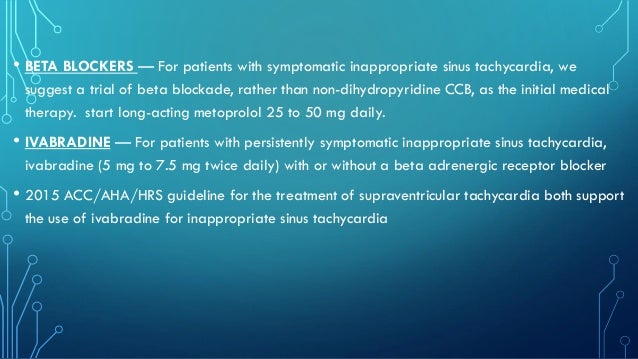



Tachy Arrythmias


コメント
コメントを投稿